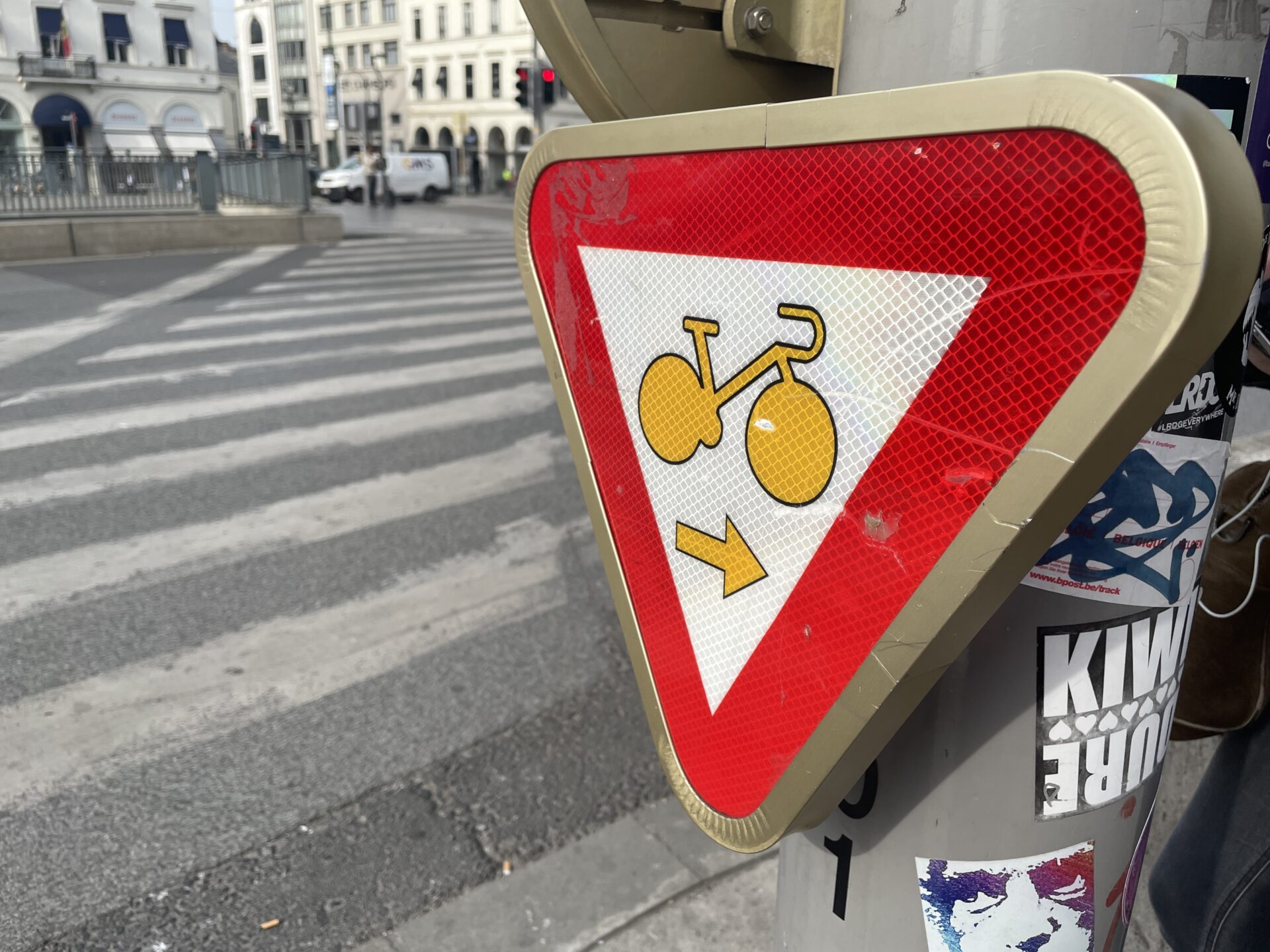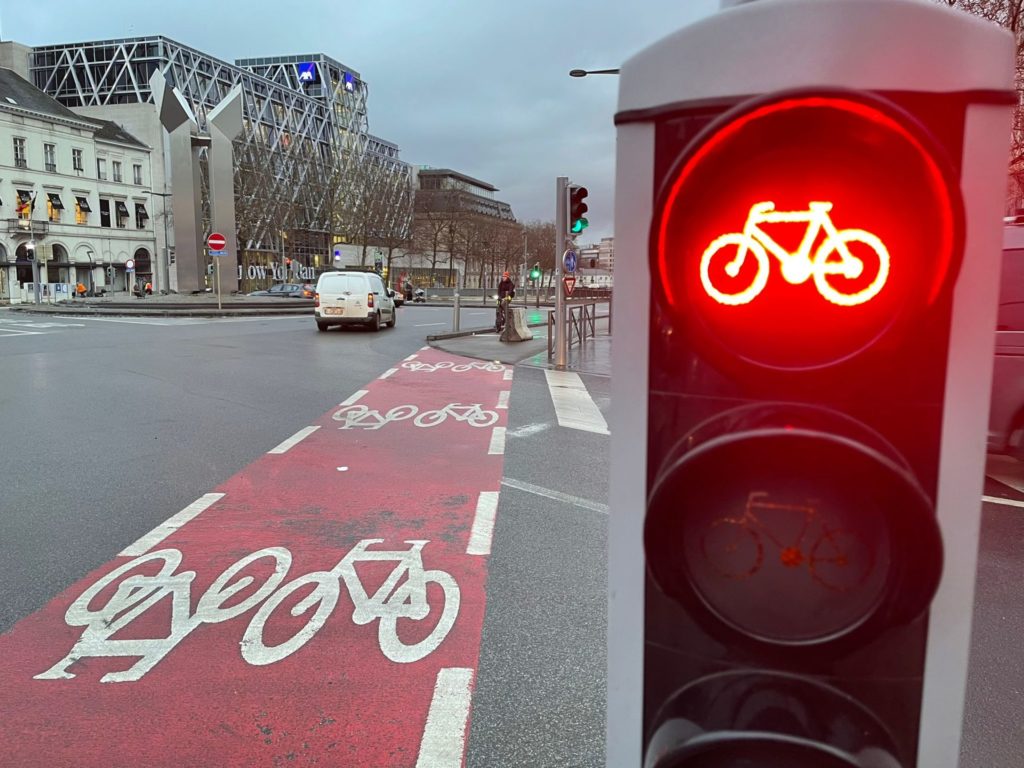Ten different cyclist groups in Brussels are joining forces to demand the city fix its ‘invisible’ bike lanes, meaning cycling lanes that are missing markings and in dire need of refurbishment.
Both French- and Dutch-speaking cycling groups have launched the appeal to Brussels’ road managers, calling for preventive and structural solutions in addition to rehabbing neglected paths.
“Marked cycle paths ensure a minimum of safety for people travelling by bike... except when the markings have disappeared,” the groups said in a press release.
“Every cyclist in Brussels is bound to have come across one: an invisible cycle track. In other words, a marked cycle path whose markings have faded over time, due to bad weather and the passage of vehicles.”
These faded or vanished markings result in a more dangerous situation for Brussels cyclists.
Without clear markings, cars drive in areas of the road reserved for cyclists
“Marked cycle paths clearly delimit the space reserved for cyclists on the public highway: cars are prohibited from driving, stopping or parking on this space,” the cycling groups point out.
“Obviously, this only works if the marking is clearly visible to all users: when it disappears, the safety of cyclists is compromised.”
Avenue Fonsny in Saint-Gilles is cited as an example of the safety problems caused by worn-out markings: the large number of vehicles that leave the inner ring road to use the avenue are not always aware that a portion of the road is dedicated to cyclists, the groups say, and cars regularly encroach on this space.

A cycling sign in Brussels. Photo by Helen Lyons/The Brussels Times.
“We also note that it is generally where motorists (and cyclists) are the most numerous that the cycle paths wear out the fastest.”
Avenue Fonsny is another example given, though the cyclists say that such “invisible” cycling lanes can be found almost everywhere in Brussels, on municipal or regional roads.
Brussels intends to do better
Brussels Mobility confirmed that its annual refreshment work for cycling paths is underway. The regional administration is also making more regular use of thermoplastic markings, which are more expensive but much more resistant to erosion than paint.
The cycling groups are asking for the same to be done in the 11 different municipalities they represent: Anderlecht, Berchem-Sainte-Aghathe, Brussels-City, Evere, Jette, Molenbeek, Saint-Gilles, Ixelles, Watermael-Boitsfort, Sint-Lambrecht-Woluwe and Sint-Pieters-Woluwe.
They even created a map highlighting the cycling paths in most dire need of rehabilitation.
“In addition to these one-off and urgent interventions, the cycling associations are calling for structural measures to be taken to address the problem,” the groups said in a statement.
“The number of marked cycle paths in the Brussels region is increasing - which is to be welcomed - but the maintenance of existing paths is just as important.”

